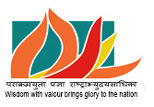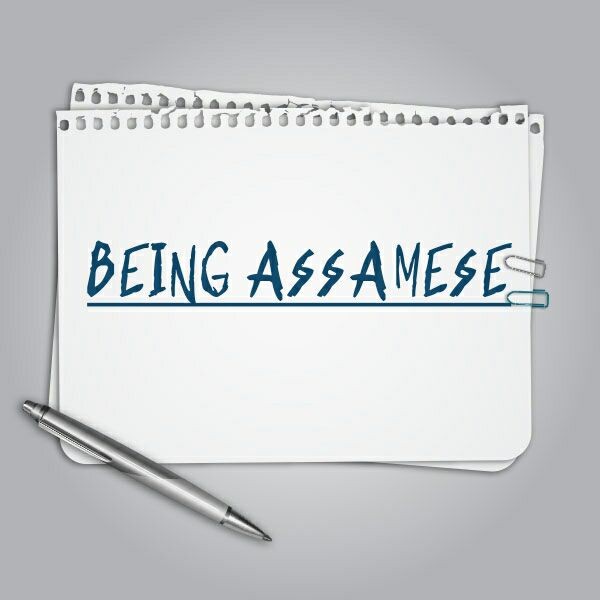Assam is not merely a piece of land marked on the map of Bharat. It is a living, breathing mosaic of rivers that flow like veins, languages that echo like songs and hearts that beat with pride, pain, and resilience. To reduce such a profoundly diverse land to the identity of a single community or the confines of a single language is not just unjust—it is a betrayal of everything that Assam truly represents.
It is a disservice to the very soul of our homeland, a soul shaped by centuries of coexistence, resistance, and cultural richness. Assam has always been a land of many. Its history is not linear, nor is its geography stagnant. Over time, its boundaries have shifted, its capital has moved—Shillong, for instance, was once the seat of Assam’s governance. Yet through all these changes, one thread remained strong: the organic unity among its people.
Before the colonial boot stepped on our soil, before the British began redrawing lines and inserting terms into our consciousness that never existed in our civilizational vocabulary—did we fight amongst ourselves over language? Did we need to differentiate between the “hills” and the “plains,” or between “Upper” and “Lower” Assam? (Popularly called as Ujoni and Namoni Axom)
These were not native ideas. They were deliberate injections—linguistic nationalism, regional binaries—all tools of fragmentation introduced by a foreign power that had no stake in our cultural harmony. They didn’t come to preserve; they came to plunder. They didn’t seek to understand; they sought to divide. Their aim was simple: sever the spiritual and cultural unity of Bharat and render us pieces of a broken whole, easier to control, easier to dominate.
Even today, long after the British have packed up and left, their legacy lingers—not as progress, but as confusion. It is painfully ironic that certain modern “intellectuals” still parrot the idea that the British developed India. That we owe our grasp of English to them. But how do they explain the fluency in English of countries that were never colonized by Britain? Many nations learned English without ever losing their linguistic pride or civilizational ethos. Colonization was never a prerequisite for knowledge—it was a weapon of erasure, a strategy to disrupt and disorient. And we must never forget that.
Within Assam, the story is no different. We see the consequences of these divisions play out every day. The Ahoms, who came and built a dynasty that lasted over 600 years, contributed immensely to the legacy of this land. Their valor, their administration, their culture—all form an inseparable part of Assam’s history. But Assam’s soul is far too vast to belong to just one community, no matter how glorious their past. The soil of Assam has been tilled, protected, and sung to by countless indigenous communities: the Koch Rajbongshi, the Moran, the Mishing, the Karbi, the Dimasa, the Bodo, the Rabha, the Tiwa, and so many others. Each one has left their fingerprints on the cultural clay of Assam.
Each has spoken their own language, followed their own traditions, and yet called this land their mother. To be Assamese, therefore, is not to speak a particular dialect or adhere to a rigid standard of language. It is to belong. It is to feel the rhythm of the land, to dance to its seasonal festivals, to partake in its struggles, and to cherish its bounty. Assamese identity is not singular—it is plural, layered, and inclusive. Yet what do we see today? There are forces at work—often from within—who attempt to narrow this beautiful identity. Regional organizations, particularly in Upper Assam, have misused the names of Ahom kings to stoke a false sense of linguistic or ethnic superiority.
I have seen with my own eyes how people are mocked or marginalized for not speaking the “standard” Assamese taught in textbooks—an Assamese often unrecognizable to those from Namoni Assam or from Bodo-dominated regions. Are the people of Namoni Assam any less Assamese? Do their songs, sung in sweet dialects, not carry the same soul as those from Sivasagar or Jorhat? Does a Bodo youth, who speaks his mother tongue with pride, lose his right to Assamese identity because he does not converse in textbook Assamese? Absolutely not. These differences in speech are not signs of division, but symbols of richness. Each dialect, each linguistic variation, is a thread in the grand tapestry of Assam. Yet while we fight over language—our own brothers and sisters—there are far graver threats looming.
There are forces, backed by foreign ideologies that seek to erase not just Assamese culture, but Bharatiya civilization itself. These forces do not merely aim to convert faiths; they seek to alter the very demographic character of the land. While we argue over dialects, districts that were once Assamese strongholds have become dominated by those who do not share our values, our heritage, or our respect for the land. And all this unfolds under the comforting blanket of a so-called secularism that disproportionately weakens the Hindu society while emboldening aggressive ideologies. We must rise above these false binaries.
Religion and nation, as understood in the Western framework, are fundamentally different from our Bharatiya concepts of Dharma and Rashtra. For us, Dharma is not just religion—it is duty, righteousness, a code of life that nurtures coexistence. Rashtra is not a political boundary—it is a sacred motherland bound by shared heritage and spiritual resonance. When we embrace the Western lens to view our own civilization, we risk losing ourselves. We start seeing our pluralism as division, our multilingualism as confusion, our indigenous diversity as backwardness. But the Sanatani way of life, which has shaped Bharat for millennia, teaches us the opposite. It teaches us to revere our rivers, honor our ancestors, protect our forests, and preserve the tongues of every Janajatiya Community, every clan, and every soul.
Linguistic nationalism has no place in such a worldview. Language is meant to connect, not to exclude. Our pride should not lie in enforcing uniformity, but in upholding unity through diversity. We are not a land of sameness—we are a land of shared stories, sung in different tongues, danced to different beats, but all echoing the same love for the land. Let us then shed the baggage of colonial binaries. Let us not be tricked into seeing each other as “Upper” or “Lower,” “standard” or “non-standard.” Let us look beyond the dialects and into the hearts that speak them. Let us not divide ourselves by the tongues we speak, but unite through the heartbeats of our shared homeland. Assam is more than a geographical region—it is an emotion, a legacy, a living culture. It is where the Brahmaputra roars with might and the Barak flows with grace. It is where Bihu is celebrated in every home, regardless of dialect. It is where every step on the earth is a step upon stories of resistance, resilience, and reverence. Let us remember this. Let us live this.
(The views expressed are the author's own and do not necessarily reflect the position of the organisation)

